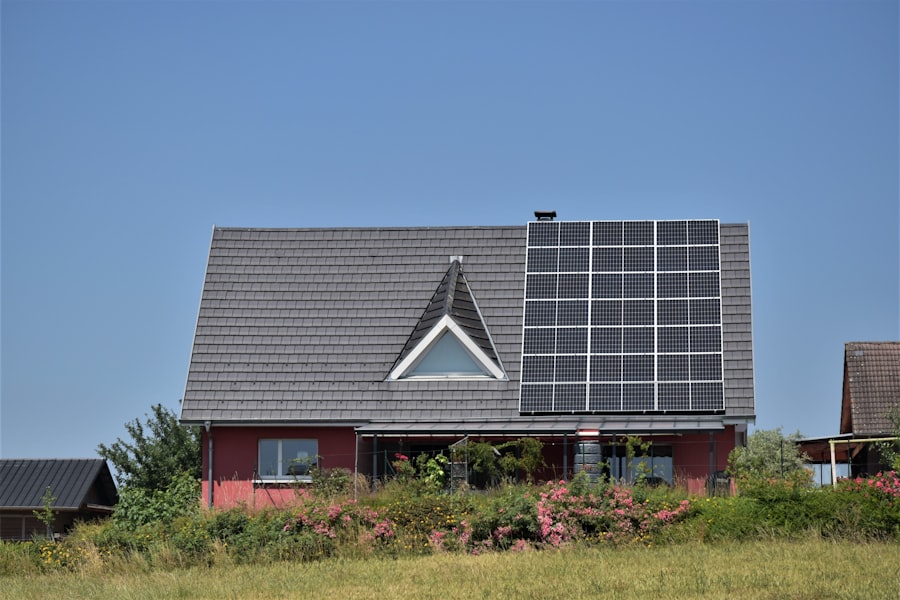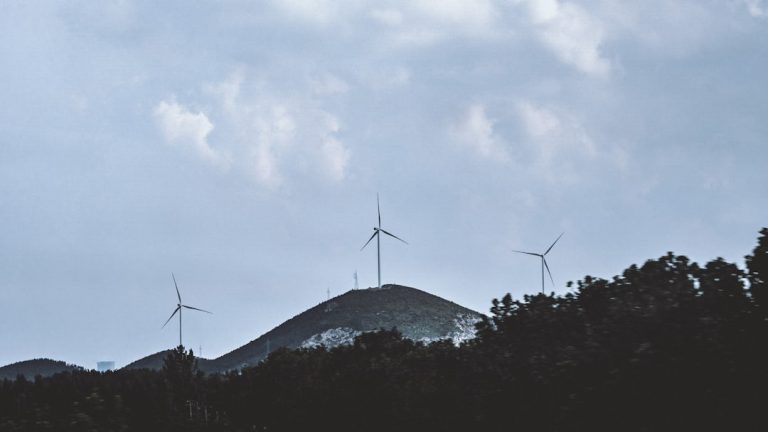
The solar photovoltaic (PV) industry has experienced remarkable growth in the United States over the past decade, driven by a combination of technological advancements, policy incentives, and a growing public awareness of climate change. As the demand for renewable energy sources continues to rise, the role of solar PV installers has become increasingly vital. These professionals are responsible for the installation, maintenance, and repair of solar energy systems, which convert sunlight into electricity.
The surge in solar energy adoption has led to a significant increase in job opportunities within this sector, making it one of the fastest-growing occupations in the country. The rise of solar PV installers can be attributed to several factors, including federal and state-level incentives that promote the use of renewable energy. Programs such as the Investment Tax Credit (ITC) have made solar installations more financially accessible for homeowners and businesses alike.
Additionally, as technology has improved, the cost of solar panels has decreased significantly, further encouraging adoption. According to the Solar Energy Industries Association (SEIA), the U.S. solar market installed 19.2 gigawatts (GW) of solar capacity in 2020 alone, marking a 20% increase from the previous year.
This growth trajectory has created a robust demand for skilled solar PV installers who can meet the needs of an expanding market.
Key Takeaways
- The number of solar PV installers in the USA has been steadily rising due to the increasing demand for renewable energy sources.
- Job duties of solar PV installers include assembling, installing, and maintaining solar panel systems on rooftops or other structures.
- Training and education requirements for solar PV installers typically include on-the-job training, apprenticeships, or completion of a technical program.
- The growing demand for solar PV installers in the USA is driven by government incentives, declining costs of solar technology, and environmental concerns.
- Career opportunities for solar PV installers include advancement to supervisory or managerial roles, as well as potential for entrepreneurship in the solar energy industry.
Job Duties and Responsibilities of Solar PV Installers
Solar PV installers have a diverse range of responsibilities that encompass various stages of the installation process. Primarily, they are tasked with assessing installation sites to determine the best locations for solar panels based on factors such as sunlight exposure, roof orientation, and structural integrity. This initial assessment is crucial, as it lays the groundwork for a successful installation that maximizes energy production.
Installers must also be adept at reading blueprints and technical diagrams to ensure that systems are installed according to specifications. Once the site assessment is complete, solar PV installers proceed with the physical installation of solar panels and associated equipment. This involves mounting panels on rooftops or ground-mounted systems, connecting electrical wiring, and integrating inverters that convert direct current (DC) electricity generated by the panels into alternating current (AC) electricity used in homes and businesses.
Safety is paramount in this line of work; therefore, installers must adhere to strict safety protocols and regulations to minimize risks associated with working at heights and handling electrical components. Additionally, they may be responsible for conducting routine maintenance checks and troubleshooting any issues that arise post-installation.
Training and Education Requirements for Solar PV Installers

While formal education is not always a strict requirement for becoming a solar PV installer, having a high school diploma or equivalent is generally expected. Many employers prefer candidates who have completed vocational training or have experience in related fields such as construction or electrical work. Various community colleges and technical schools offer programs specifically designed to train individuals for careers in solar energy.
These programs often cover essential topics such as electrical theory, system design, and installation techniques. Certification can also enhance an installer’s job prospects and credibility within the industry. The North American Board of Certified Energy Practitioners (NABCEP) offers certification programs that validate an installer’s knowledge and skills in solar PV installation.
Obtaining NABCEP certification requires passing a rigorous exam and demonstrating hands-on experience in the field. Additionally, many states have their own licensing requirements for solar installers, which may include completing specific training courses or obtaining a certain number of hours of on-the-job experience. Continuous education is also important in this rapidly evolving field, as new technologies and best practices emerge regularly.
The Growing Demand for Solar PV Installers in the USA
| Year | Number of Solar PV Installations | Projected Growth Rate |
|---|---|---|
| 2015 | 734,000 | 12% |
| 2016 | 1,360,000 | 47% |
| 2017 | 2,030,000 | 49% |
| 2018 | 2,500,000 | 23% |
| 2019 | 3,000,000 | 20% |
The demand for solar PV installers is projected to continue its upward trajectory as more individuals and businesses seek sustainable energy solutions. According to the U.S. Bureau of Labor Statistics (BLS), employment for solar photovoltaic installers is expected to grow by 61% from 2020 to 2030, significantly faster than the average for all occupations.
This growth is fueled by increasing investments in renewable energy infrastructure, as well as a societal shift towards reducing carbon footprints and embracing environmentally friendly practices. Several factors contribute to this growing demand. First, many states have implemented renewable portfolio standards (RPS) that require utilities to obtain a certain percentage of their energy from renewable sources.
This regulatory framework incentivizes both residential and commercial installations of solar energy systems. Furthermore, as technology continues to advance, solar panels are becoming more efficient and affordable, making them an attractive option for consumers. The combination of favorable policies, technological improvements, and heightened environmental awareness positions solar PV installers at the forefront of a burgeoning industry.
Career Opportunities and Advancement for Solar PV Installers
Career opportunities for solar PV installers extend beyond entry-level positions; there are numerous pathways for advancement within the field. Many installers begin their careers as apprentices or helpers under the guidance of experienced professionals. As they gain hands-on experience and develop their skills, they can progress to lead installer roles or supervisory positions where they oversee installation teams and manage projects from start to finish.
Additionally, some solar PV installers choose to specialize in specific areas such as system design or sales. Those with strong technical skills may transition into roles focused on system engineering or project management, where they can leverage their expertise to optimize installations and improve efficiency. Others may pursue opportunities in sales or customer service within solar companies, helping clients navigate their options for solar energy solutions.
The versatility of skills acquired in this field allows for a diverse range of career paths that can lead to fulfilling roles in various aspects of the renewable energy sector.
The Importance of Solar PV Installers in the Renewable Energy Industry

Solar PV installers play a critical role in advancing the renewable energy industry by facilitating the transition from fossil fuels to clean energy sources. Their expertise not only ensures that solar systems are installed correctly but also contributes to the overall efficiency and effectiveness of these systems in generating electricity. By providing reliable installations, they help build consumer confidence in solar technology, which is essential for widespread adoption.
Moreover, solar PV installers contribute to job creation and economic growth within their communities. As more households and businesses invest in solar energy systems, local economies benefit from increased employment opportunities and reduced energy costs. The ripple effect extends beyond just installation jobs; it also encompasses manufacturing, distribution, and maintenance roles within the broader solar supply chain.
In this way, solar PV installers are not only pivotal in promoting renewable energy but also serve as catalysts for economic development.
Challenges and Opportunities for Solar PV Installers in the USA
Despite the promising outlook for solar PV installers, there are challenges that professionals in this field must navigate. One significant challenge is the variability in state policies regarding renewable energy incentives and regulations. While some states offer robust support for solar installations through tax credits and rebates, others may lack such incentives, leading to disparities in market growth across regions.
This inconsistency can create uncertainty for both installers and consumers regarding the financial viability of solar projects.
This influx can lead to price wars that may squeeze profit margins for installers.
However, these challenges also present opportunities for those willing to adapt and innovate. For instance, installers who embrace new technologies such as battery storage systems or smart home integration can differentiate themselves from competitors and offer added value to customers.
The Future of Solar PV Installers: Trends and Projections
Looking ahead, several trends are likely to shape the future landscape for solar PV installers in the United States. One prominent trend is the increasing integration of energy storage solutions with solar installations. As battery technology advances and becomes more affordable, homeowners will seek ways to store excess energy generated during peak sunlight hours for use during periods of low sunlight or high demand.
This shift will require installers to expand their skill sets to include knowledge about battery systems and hybrid installations. Another trend is the growing emphasis on sustainability beyond just energy generation; consumers are becoming more conscious of the environmental impact of their choices throughout the entire lifecycle of products they purchase. This awareness may lead to increased demand for eco-friendly materials and practices within solar installations, prompting installers to adopt greener methods in their work processes.
Furthermore, advancements in digital tools such as design software and remote monitoring systems will likely enhance efficiency in installation processes while improving customer engagement through real-time data access. As these technologies evolve, they will create new opportunities for installers who are willing to embrace innovation. In summary, while challenges exist within the industry, the future remains bright for solar PV installers as they play an essential role in driving the transition towards renewable energy sources across the United States.
According to a recent article on careersintheusa.com, Solar Photovoltaic Installers are among the fastest growing occupations in the USA. This trend is highlighted in the website’s comprehensive list of job opportunities and career resources, which can be found on careersintheusa.com. For more information on the job outlook for Solar Photovoltaic Installers and other growing occupations, be sure to visit the website’s sample page at careersintheusa.com/sample-page.
FAQs
What is a solar photovoltaic installer?
A solar photovoltaic installer is a professional who is responsible for installing, maintaining, and repairing solar panel systems on rooftops or other structures.
Why are solar photovoltaic installers considered the fastest growing occupation in the USA?
The demand for solar energy has been increasing rapidly in the USA, leading to a surge in the need for solar photovoltaic installers. As the country continues to shift towards renewable energy sources, the demand for these professionals is expected to continue growing.
What are the job responsibilities of a solar photovoltaic installer?
The job responsibilities of a solar photovoltaic installer include assessing the site for solar panel installation, assembling and installing solar panels, connecting the panels to the electrical system, and performing routine maintenance and repairs.
What are the educational requirements to become a solar photovoltaic installer?
While a high school diploma is typically the minimum requirement, some employers may prefer candidates with postsecondary education in renewable energy or related fields. On-the-job training is also common in this occupation.
What is the average salary of a solar photovoltaic installer in the USA?
According to the U.S. Bureau of Labor Statistics, the median annual wage for solar photovoltaic installers was $44,890 in May 2020. However, this can vary based on factors such as experience, location, and employer.






